When it comes to making amazing compost for your garden and flowerbeds, it all starts with knowing how to take great care of your compost pile. The good news is it isn’t complicated. In fact, all it takes for an amazing compost pile is to take care of 4 simple needs!
Compost is essentially the broken-down organic matter that is created from materials decomposing over time. The result is a rich, dark material that is packed full of nutrients and organic matter.
You can use compost almost anywhere you grow plants. To replenish soils that are depleted of nutrients or kick starting start seed germination and transplant growth by adding it when planting. Compost is also perfect for improving the composition of densely-packed soils, and can even create an organic, all-purpose liquid fertilizer.
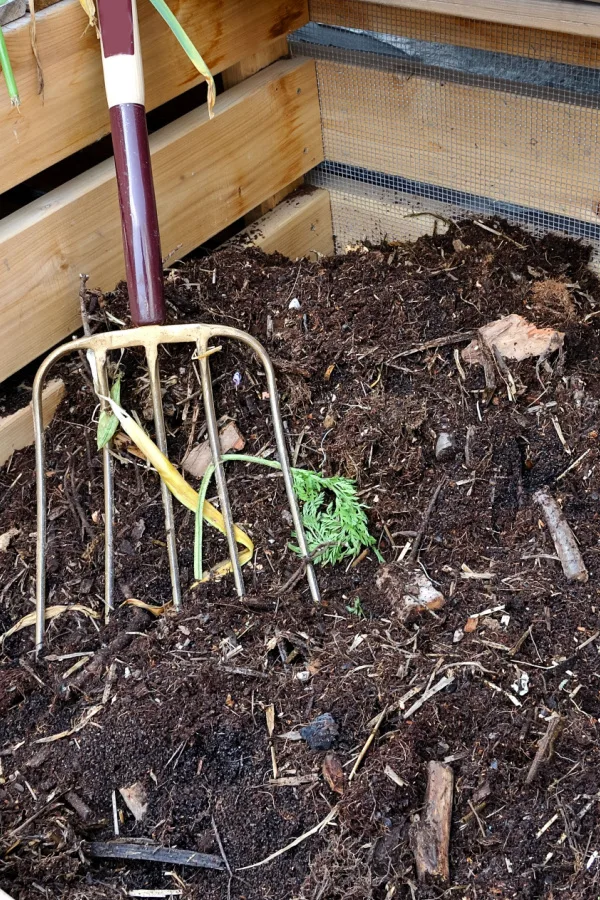
But in order to take advantage of all the wonderful benefits of using compost, you have to start with properly taking care of your home compost pile. A good compost pile should be the right size with the correct materials, stay slightly moist, and be hot enough to break down materials.
With that in mind, here are the four simple secrets that are easy to do – and accomplish just that!
4 Secrets To Taking Care Of A Compost Pile
One of the most important aspects of creating amazing compost is heat. A compost pile needs to reach between 110 to 140º Fahrenheit. At these temperatures, there are a couple of things that occur besides just allowing materials to break down quickly. (Product Link: Backyard Compost Thermometer)
First, high heat helps to kill off most seeds that might find their way into your compost pile. Whether they are unwanted weed seeds or volunteer vegetable seeds from clearing out your fall garden, you don’t want those seeds to germinate.
Another benefit of those higher temps is that pathogens that can cause disease and other issues are eliminated. This allows you to end up with compost that won’t harm you or your future garden plants.
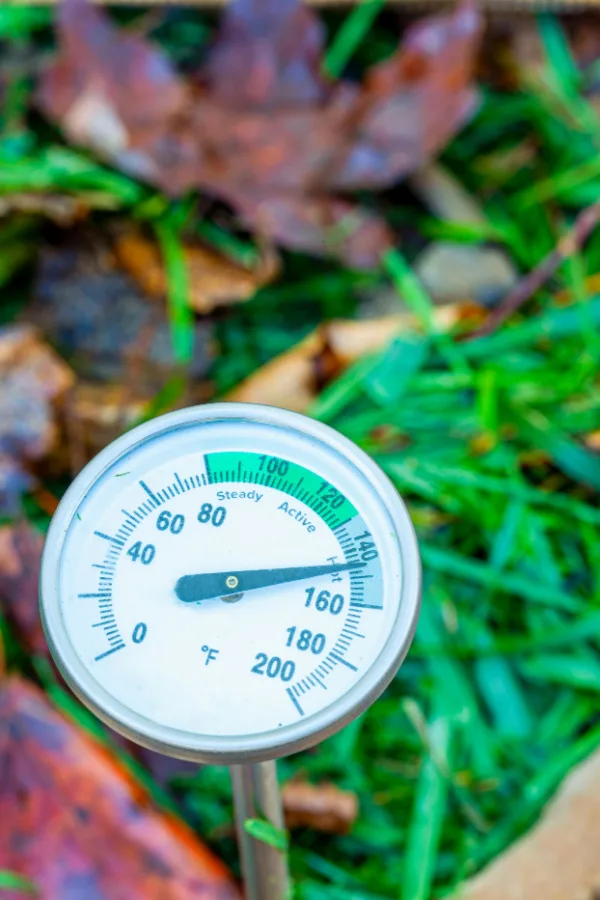
In order for home compost piles to really heat up to the desired temperatures and decompose materials quickly, the following four tips need to be taken into consideration.
1. The Proper Size – Secrets Of Taking Care Of A Compost Pile
Containers to keep home compost piles can be made of all sorts of different materials. From basic lumber to repurposed pallets to simple bricks, you can use almost anything to create a compost pile.
As long as you stay away from items that can leech chemicals or other toxic products into your compost and they are weather safe, they should work just fine. However, while there aren’t really rules on the materials used, there are a few suggestions on the size of your setup.
Before you even start to add products to your pile, you need to make sure the container is the right size. You want to create a pile that is large enough so it can really heat up and start to decompose without being so large you struggle to work with it. On the other hand, you also don’t want a pile that is too small either.
The Best Size To Use
The ideal home compost pile should be three feet wide by 3 feet deep by 3 feet tall. This size allows the pile to create sufficient thermal heat while still being easy to turn.
You can go all the way up to five feet wide by five feet deep by 3 feet high. However, try to avoid anything larger than this.
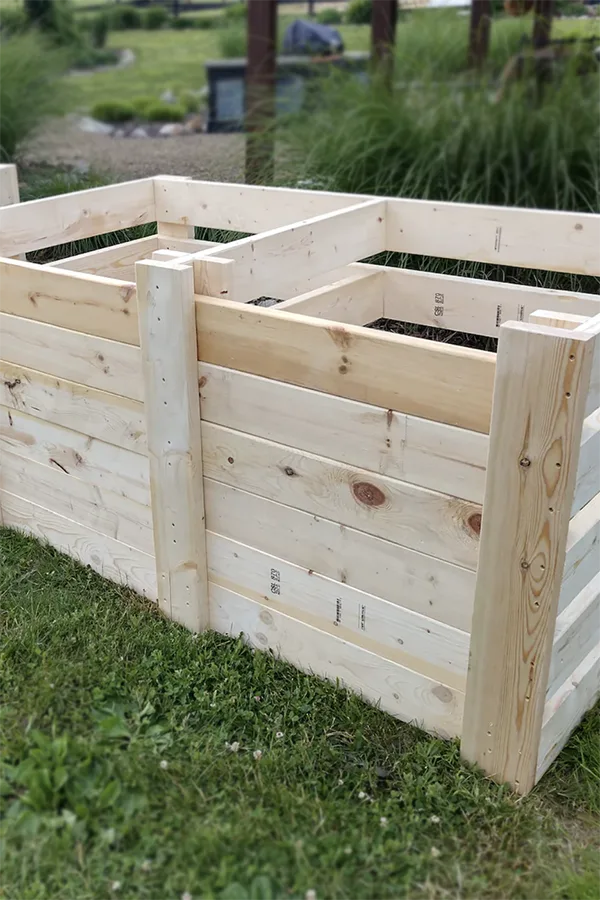
Also, consider using a multi-bin system. This setup will allow you to have one bin with finished compost and at least another for adding new materials. A two- or three-bin system will allow you to always have finished compost at the ready.
2. Makeup Of Your Materials
The next important aspect of taking care of a compost pile is to be aware of what materials you add to your pile.
For ideal results, you want to aim for the right combination of green and brown materials. To be more exact, aim for around one part green materials for every four parts brown materials you add.
Green materials are high in nitrogen and they help to heat up compost piles. Brown materials, on the other hand, contain carbon which helps to add oxygen and break down materials. Both need to be present in home compost piles in order to help decompose materials quickly and efficiently.
Items like kitchen scraps, farm animal manure, egg shells, green grass clippings, healthy plant materials, and even coffee grounds are excellent green materials. Straw, cardboard, sawdust, dried grass clippings, dead leaves, and shredded newspapers are all examples of brown materials.
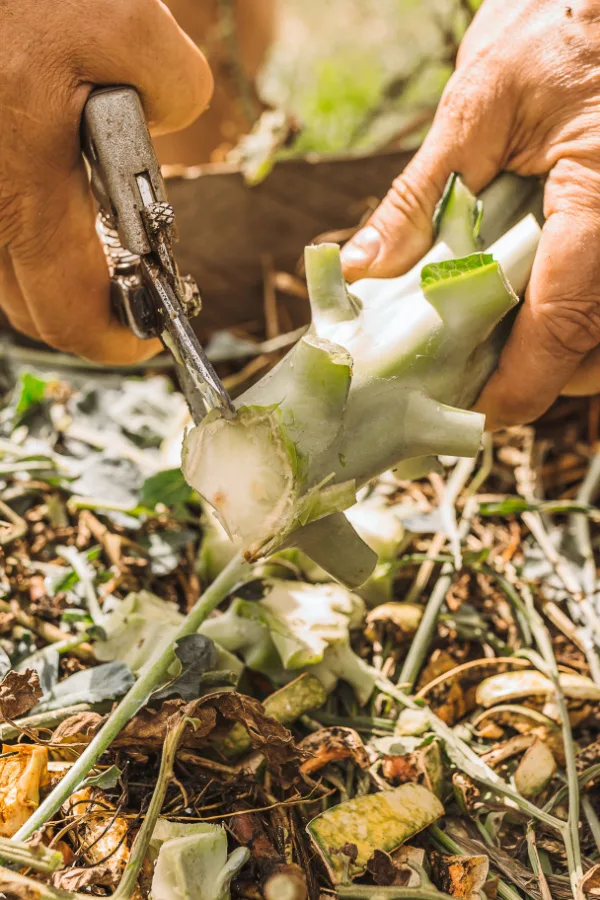
While the 1:4 ratio is a guide, don’t stress about exact quantities too much. You also don’t need to add the ratio amounts at the same time either. If you add a bucketful of fresh grass clippings one day, just try to balance it out with a few bucketfuls of straw another day.
Size Of The Materials
It’s not just the type of materials that is important. The size of the materials you add matters in order to get the compost pile to decompose quickly.
The smaller the pieces, the quicker the materials will decompose. For example, don’t just throw an entire watermelon rind into the compost pile. Instead, chop it up into a few pieces. The smaller pieces are able to break down faster, which give you compost ready to use sooner!
Your mower can be your best friend when it comes to helping shred yard waste materials. Before adding leaves or straw to the pile, just take a few passes over the items with your mower to help chop them up into more manageable pieces.
3. Sufficient Air
Another important aspect of caring for a compost pile is oxygen. Just like a fire needs oxygen to stay blazing, a home compost pile needs oxygen to keep the pile heated up.
The best way to add oxygen to your pile is to turn the materials often. Essentially, turning is the process of mixing up the materials to help all of the items reach the optimum internal temperature of between 110 to 140º Fahrenheit.
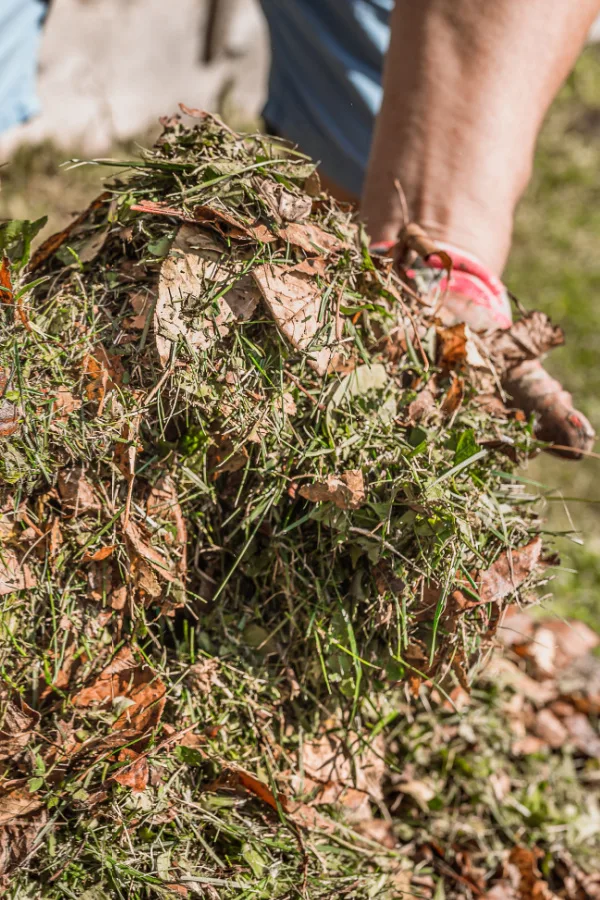
Compost piles heat up from the center outward. The materials in the middle of your compost pile will be the hottest while those on the outside will be cooler. Turning the pile allows all of the material to evenly heat up and break down quickly.
While some pre-built commercial composters have features that allow them to be easily turned, you can also turn materials in homemade compost bins as well. Simply take a pitchfork or shovel to flip the outside materials to the middle and vice versa. Aim for turning your pile at least once a week; More often in the summer if possible.
Since it takes a bit of muscle and effort to turn compost materials frequently, this is the main reason why you don’t want to create a compost pile that is too large. A huge pile will be difficult to turn and add in that much-needed oxygen.
4. Proper Moisture Content – Secrets Of Taking Care Of A Compost Pile
Last but not least, you need water to create amazing finished compost. As odd as it might sound, you need moisture for compost piles to stay hot and continue breaking down materials.
The middle of a well-working compost pile should be slightly damp. It’s normal for the edges to dry out some, but the inside should be moist. The contents shouldn’t be so damp that you can wring them out, but feel more like a slightly damp sponge.
If you go to turn your compost materials and notice that the middle is dry, just add water. Dump a few buckets of water or use a garden hose to dampen it. Just remember to not completely saturate the pile.
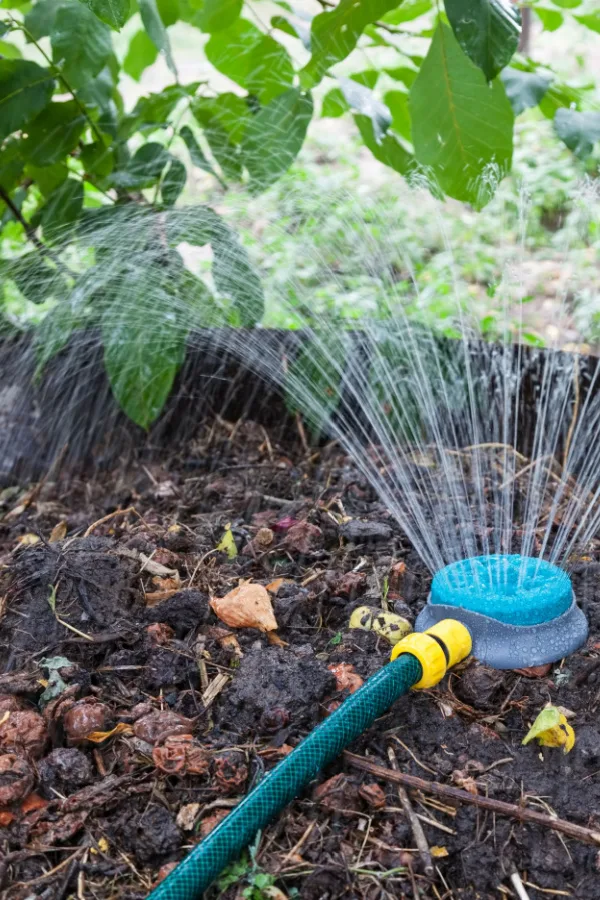
If your compost pile is in a location that is unable to absorb rainfall, you are going to need to water the pile occasionally. A light soaking once every week or so should be fine during the summer months. You can even add a thick layer of stray or a damp burlap bag on top to help retain moisture during dry periods.
However, if your compost pile material is constantly soaking wet, you need to find a way to cover the contents. Consider adding a permanent lid or cover to help keep out excess moisture.
To Conclude . . .
If you want to read a more in-depth article that will teach you all you need to know about composting, check out “Learn How To Compost Like A Pro – A Simple Guide To Create Great Soil!” There’s even an included podcast to listen to as well.
With these four tips on caring for your compost pile though, you will have amazing black gold to use in your garden and flowerbeds in no time at all!
Follow Our Facebook Page For Even More Great Tips! Simple Garden Life Facebook Page
Simple Garden Life is a website dedicated to keeping gardening fun, simple and enjoyable! We publish two new articles each week along with a new garden podcast episode every two weeks. This article may contain affiliate links.
